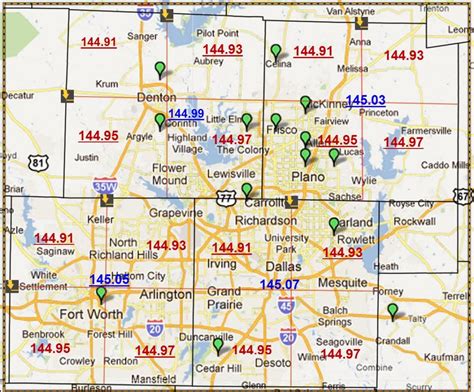Discover the history and purpose of zip codes, understand Dallas zip codes with map, boundaries, and popular codes for mailing and location-based services.Are you curious about the zip codes in Dallas, Texas? In this blog post, we will explore everything you need to know about zip codes, with a particular focus on Dallas. From the history and purpose of zip codes to understanding the layout and boundaries of Dallas zip codes, we’ve got you covered. We’ll also delve into the impact of zip codes on location-based services and how they are used for mailing. Plus, we’ll provide a map of Dallas with popular zip codes highlighted, so you can easily identify specific areas. Whether you’re a local resident or just interested in learning more about zip codes, this post will offer valuable insight into the world of zip codes, especially in the vibrant city of Dallas, Texas. Let’s dive in and uncover the fascinating world of zip codes!
What is a zip code?
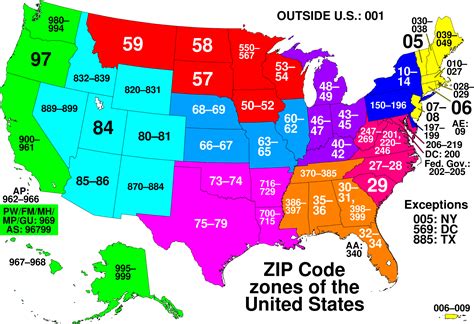
A zip code is a system used in the United States to facilitate the sorting and delivery of mail. It is a series of numbers that are added to a postal address to assist in the swift and efficient mailing of letters and packages. The term ZIP stands for Zone Improvement Plan, which was chosen to emphasize that the code was developed to improve the speed and accuracy of mail delivery.
The zip code was first introduced in the United States in 1963 by the United States Postal Service. It was created to help divide the country into easily manageable areas, making mail sorting and delivery more efficient. Each zip code represents a specific geographic area, ranging from individual buildings to entire neighborhoods or cities.
Zip codes are particularly important for businesses and organizations that rely on mailing services to reach their customers or members. They allow for more targeted marketing and ensure that mail reaches the intended recipients in a timely manner. Additionally, zip codes are often used in demographic analysis and location-based services, providing valuable information about population distribution and consumer behavior.
Overall, zip codes play a crucial role in the functioning of the postal system and have become an integral part of addressing and mailing in the United States. Whether sending a letter across town or shipping a package across the country, understanding and utilizing zip codes is essential for efficient and reliable mail delivery.
Purpose of zip codes
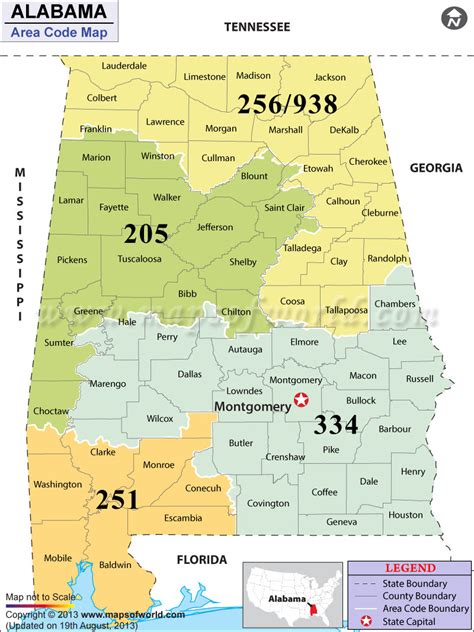
Zip codes are commonly used to help organize and streamline the process of delivering mail. The purpose of zip codes is to divide the geographical area of a city or town into smaller, more manageable sections, making it easier for postal workers to deliver mail to specific locations.
Furthermore, zip codes also play a role in helping businesses and government agencies gather important demographic information. By analyzing the distribution of zip codes, companies can gain insights into the behavior and characteristics of residents in different areas.
Additionally, zip codes are used in marketing and advertising to target specific groups of consumers. Advertisers can use zip codes to tailor their campaigns to particular neighborhoods or regions, ensuring that their message reaches the right audience.
Moreover, zip codes are integral in the operation of location-based services, such as GPS navigation and online mapping tools. The use of zip codes allows these services to accurately pinpoint and provide directions to specific addresses, enhancing convenience and efficiency for users.
The history of zip codes

Zip codes have become an essential part of the mailing system in the United States. But have you ever wondered about the history behind them? The concept of zip codes dates back to the 1940s when the United States Postal Service was searching for a more efficient way to sort and deliver mail. In 1944, postal inspector Robert Moon proposed a system of postal zones to facilitate the manual sorting of mail. This system paved the way for the development of the modern zip code system.
However, it was not until 1963 that the zip code as we know it today was introduced. The term ZIP stands for Zone Improvement Plan, and the new system aimed to improve the speed and accuracy of mail delivery. On July 1, 1963, the first zip code was assigned to the city of Dallas, TX, marking the beginning of a new era in mail handling and delivery.
Over the years, the zip code system has undergone various changes and updates to keep up with the growing needs of the postal service. Today, zip codes play a crucial role in not only mail delivery but also in various location-based services and data analysis.
The history of zip codes reflects the ongoing efforts to streamline and improve the postal system, and it continues to evolve to meet the demands of modern society.
The layout of zip codes

Zip codes were first introduced in the United States in 1963 and are used for the efficient sorting and delivery of mail. In Dallas, Texas, zip codes are a crucial part of the postal system, helping to organize the city into distinct areas.
Each zip code in Dallas consists of five numerical digits, which are used to identify specific geographic areas. The first digit represents a group of U.S. states, the second and third digits together represent a region within that group, and the fourth and fifth digits represent a group of delivery addresses within that region.
For example, the zip code 75201 in Dallas has the following layout: 75 is the section of the city, 2 is the zone within the section, and 01 is the specific location within the zone. This layout helps postal workers quickly and accurately sort and deliver mail to its intended destination.
Understanding the layout of zip codes in Dallas is important for businesses and individuals alike, as it can impact mailing costs, delivery times, and even marketing strategies. By targeting specific zip codes, businesses can tailor their marketing efforts to reach their desired demographic and improve their overall success.
Ultimately, the layout of zip codes in Dallas plays a crucial role in the organization and efficiency of the postal system, as well as the implementation of location-based services and marketing strategies.
Understanding Dallas zip codes

When it comes to understanding Dallas zip codes, it’s important to know that the city is quite vast and diverse. With over 60 unique zip codes, each area within Dallas has its own distinct code, which is crucial for ensuring that mail and packages are delivered correctly. Whether you’re a resident, business owner, or visitor, having a grasp of Dallas zip codes can be incredibly helpful.
Each zip code in Dallas, TX consists of five digits, but many people are unaware that the first digit of the code can provide insight into the general area of the city it serves. For example, zip codes that begin with ’75’ typically correspond to neighborhoods in the northern part of the city, while codes starting with ’76’ are often located in the southern regions.
One of the reasons why understanding Dallas zip codes is important is for navigation purposes. Whether you’re using a GPS or mapping software, inputting the correct zip code can help ensure that you reach your destination precisely. Furthermore, businesses can use zip codes to target specific areas for marketing campaigns or service offerings, making it an essential tool for local commerce.
For anyone relocating to Dallas or considering a move within the city, having knowledge of the different zip codes can be invaluable. It can influence decisions related to housing, school districts, and even access to amenities and services. By understanding the layout and distribution of zip codes in Dallas, individuals can make more informed choices about where they live and work.
Zip code map of Dallas

When it comes to understanding the layout of zip codes in Dallas, it’s important to take a look at a zip code map. The map provides a visual representation of the various zip code boundaries within the city, allowing residents and businesses to easily identify their location within the zip code system.
By referencing a zip code map of Dallas, individuals can determine which specific zip code corresponds to their address, making it easier to navigate the city and receive mail and packages. The map also helps businesses identify target demographics and market their products or services to specific zip code areas.
With the help of a zip code map, individuals can gain a better understanding of the distribution of zip codes within Dallas, including the layout of both residential and commercial areas. This can be particularly useful for real estate professionals, who can use the map to pinpoint specific neighborhoods and properties within the city.
Furthermore, a zip code map of Dallas can be a valuable tool for city planners and government officials, as it provides insight into population distribution and demographics across different zip code areas. This information can be used to allocate resources and services, as well as to identify areas in need of development or improvement.
Overall, the zip code map of Dallas serves as an essential resource for residents, businesses, and city officials alike, offering valuable insights into the geographic layout and distribution of zip codes within the city.
Popular zip codes in Dallas
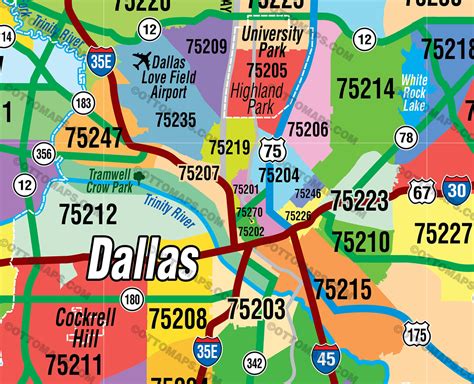
When it comes to the popular zip codes in Dallas, there are a few that stand out from the rest. These zip codes are not only highly sought after, but they also offer a great living experience for residents.
One of the most popular zip codes in Dallas is 75201. This zip code is located in the heart of downtown Dallas and offers residents easy access to some of the city’s best restaurants, entertainment venues, and shopping centers. With its bustling city life and vibrant atmosphere, it’s no wonder why 75201 is a top choice for many Dallas residents.
Another sought-after zip code in Dallas is 75225. Located in the affluent neighborhood of North Dallas, this zip code boasts beautiful homes, top-rated schools, and a strong sense of community. Residents in this area also have access to upscale shopping and dining options, making it a desirable zip code for families and professionals alike.
75204 is yet another popular zip code in Dallas. Situated near the trendy Uptown area, this zip code offers a mix of modern apartment living and historic homes. With its proximity to popular bars, restaurants, and entertainment venues, it’s no surprise that 75204 continues to attract young professionals and urban dwellers.
Overall, these popular zip codes in Dallas offer a diverse range of amenities and lifestyles, making them highly sought after by residents. Whether you prefer the hustle and bustle of downtown living or the serene charm of suburban neighborhoods, Dallas has a zip code to fit your needs.
Zip code boundaries in Dallas

Zip codes were first introduced in the United States in 1963 to improve the efficiency of mail delivery. In Dallas, Texas, these postal codes play a crucial role in defining the boundaries of different neighborhoods and areas. Each zip code corresponds to a specific area and helps in the organization and delivery of mail.
The zip code boundaries in Dallas are defined by numerical codes that range from 75001 to 75398. These five-digit numbers help to distinguish different regions within the city, making it easier for mail carriers to navigate and deliver mail accurately. From downtown Dallas to the suburbs, each area has its own unique zip code boundary that aids in location-based services and mailing operations.
Understanding the layout of these zip code boundaries is essential for businesses and individuals alike. It enables them to target specific areas for marketing, distribution, and other location-based activities. By utilizing zip code maps and databases, organizations can gain insights into the demographic and geographic characteristics of different areas within Dallas, allowing for more targeted and effective outreach strategies.
Furthermore, these zip code boundaries also influence property values and real estate trends within Dallas. Certain zip codes may be associated with higher property values and desirability, while others may offer more affordable housing options. By analyzing these boundaries, prospective homebuyers and investors can gain a better understanding of the housing market in different areas of the city.
In conclusion, the zip code boundaries in Dallas have a significant impact on various aspects of city life, from mail delivery to urban planning and real estate. Understanding these boundaries is essential for navigating the city and making informed decisions related to location-based activities.
Using zip codes for mailing

Using zip codes for mailing is an essential part of the postal system. Zip codes were first introduced in the United States in 1963 to improve the efficiency of mail delivery and to make sorting and delivering mail easier. Since then, zip codes have become a standard part of addressing mail and are used to help facilitate the accurate and timely delivery of letters, packages, and other mail items.
When mailing a letter or package, including the correct zip code is crucial for ensuring that it reaches its intended destination. In addition to the standard five-digit zip code, there are also nine-digit zip codes, known as ZIP+4 codes, which provide even more precise location information for mail delivery. Including the ZIP+4 code can further enhance the accuracy and speed of mail delivery.
For businesses that regularly send out large volumes of mail, utilizing zip codes is especially important. Many companies use postal software to validate addresses and ensure that the correct zip codes are included on all outgoing mail. This helps to minimize errors and reduce the risk of undeliverable mail, ultimately saving time and money for businesses.
Overall, zip codes play a crucial role in the mailing process, streamlining mail delivery and ensuring that letters and packages reach their destinations in a timely manner. Whether it’s a personal letter or an important business document, including the correct zip code is essential for efficient mailing.
Impact of zip codes on location-based services
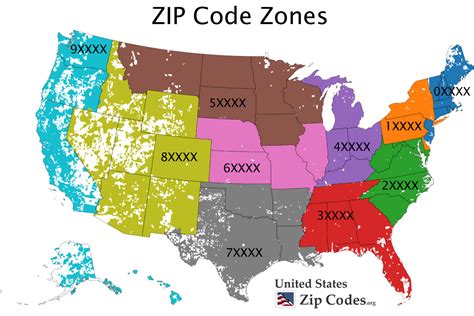
Zip codes play a crucial role in the realm of location-based services, affecting everything from marketing strategies to targeted advertising. In the age of digitalization, businesses heavily rely on zip codes to tailor their services to specific geographic areas, ensuring that their resources are utilized effectively and efficiently.
When it comes to the impact of zip codes on location-based services, it’s important to consider the level of personalization that can be achieved. By analyzing zip code data, businesses can gain valuable insights into the demographics, preferences, and purchasing behaviors of specific areas, allowing them to customize their offerings to better suit the needs of local consumers.
Moreover, zip codes enable businesses to optimize their marketing efforts by targeting specific geographical areas with relevant promotions and advertisements. This level of precision not only enhances the effectiveness of marketing campaigns but also helps in minimizing wasted resources by reaching only the most relevant audience.
Furthermore, location-based services such as delivery and logistics heavily rely on accurate zip code information to ensure timely and efficient operations. From route planning to package tracking, zip codes are integral to the smooth functioning of these services, making them indispensable in the modern business landscape.
In conclusion, the impact of zip codes on location-based services cannot be understated. From personalized marketing strategies to optimized logistics, zip codes are fundamental in shaping the way businesses interact with their customers and operate in specific geographical areas.
Frequently Asked Questions

What is the zip code for downtown Dallas, TX?
The zip code for downtown Dallas, TX is 75201.
What is the zip code for North Dallas, TX?
The zip code for North Dallas, TX is 75225.
What is the zip code for Dallas Love Field Airport?
The zip code for Dallas Love Field Airport is 75235.
What is the zip code for the arts district in Dallas, TX?
The zip code for the arts district in Dallas, TX is 75201.
What is the zip code for the Deep Ellum neighborhood in Dallas, TX?
The zip code for Deep Ellum neighborhood in Dallas, TX is 75226.
What is the zip code for the Bishop Arts District in Dallas, TX?
The zip code for Bishop Arts District in Dallas, TX is 75208.
What is the zip code for Uptown Dallas, TX?
The zip code for Uptown Dallas, TX is 75204.

